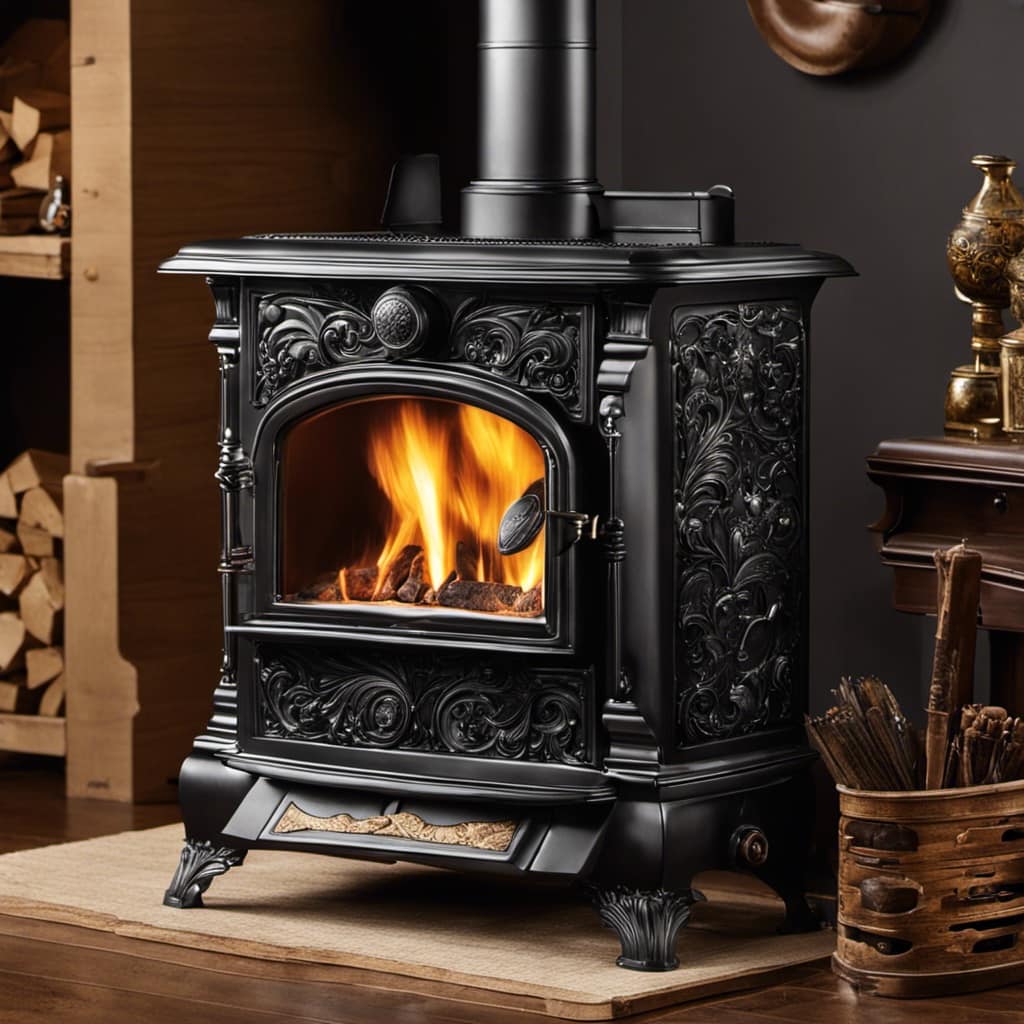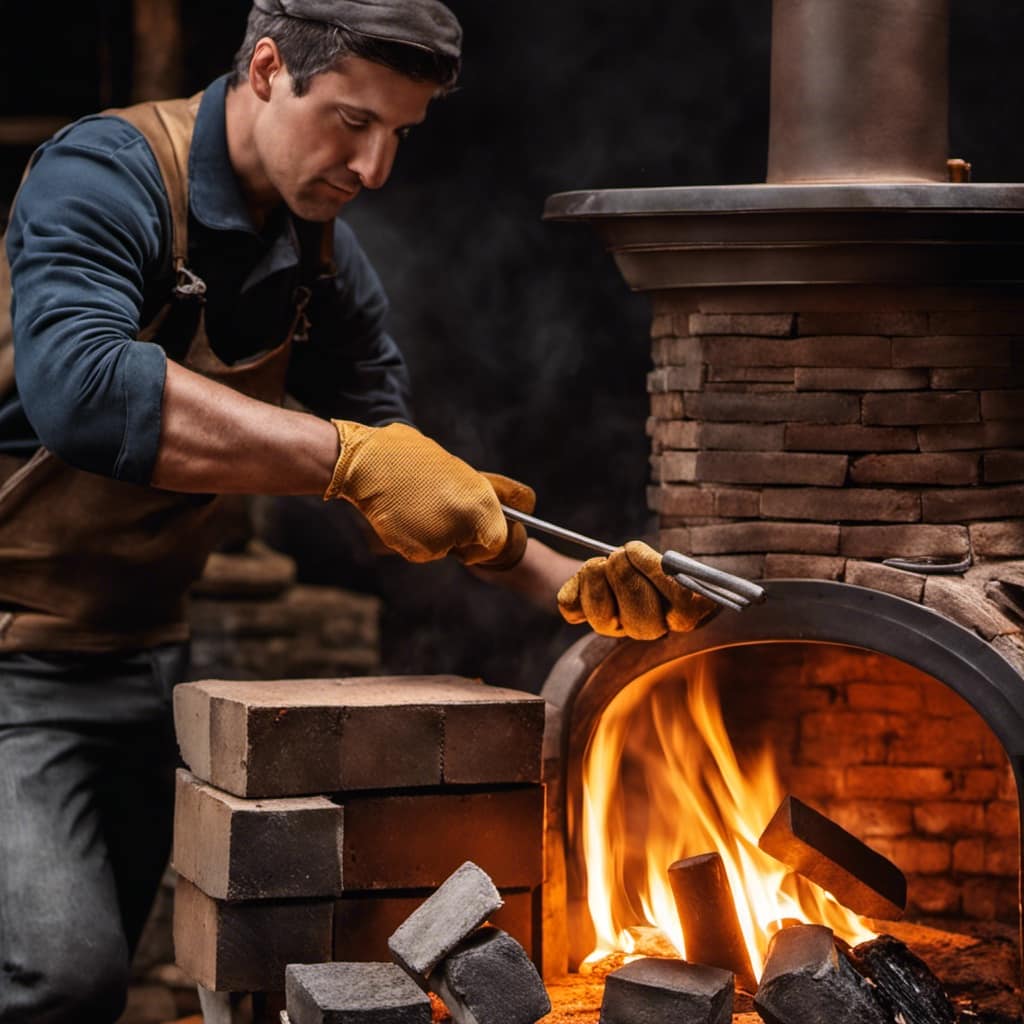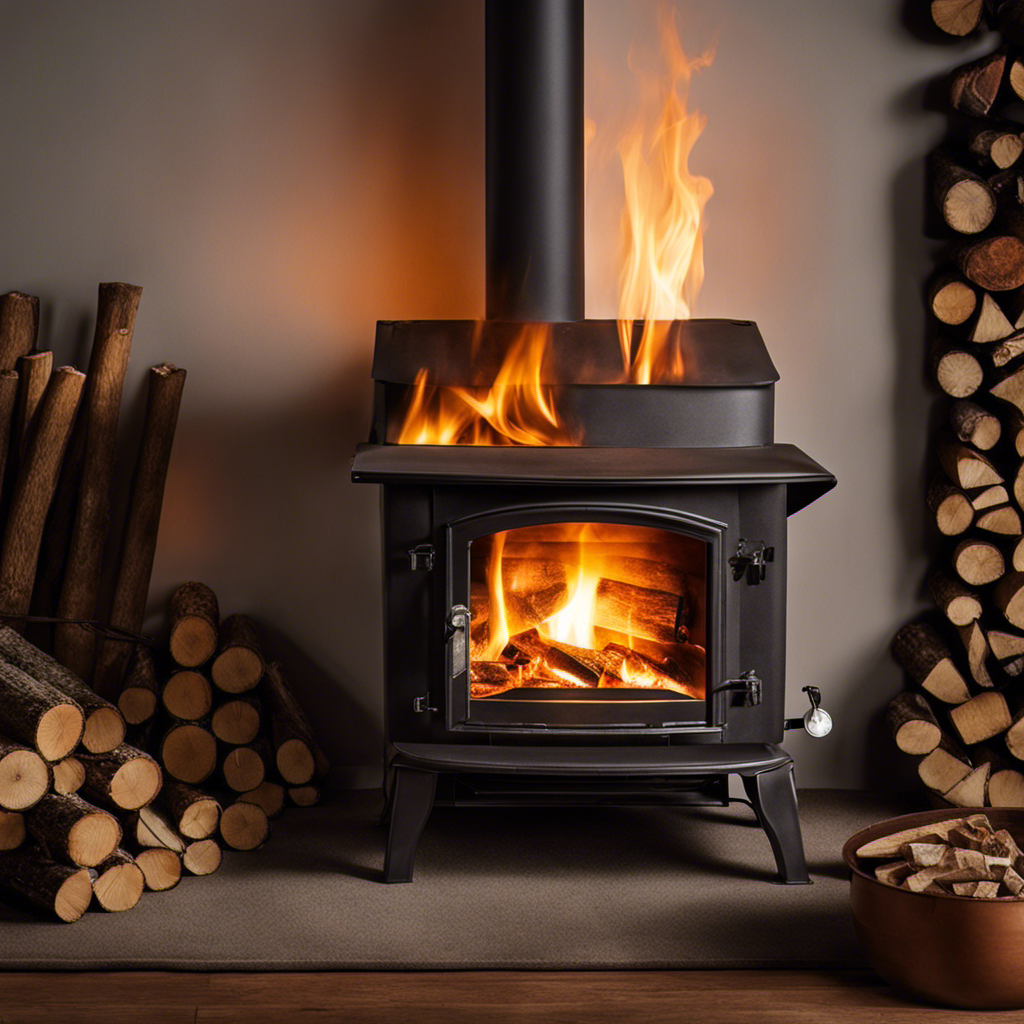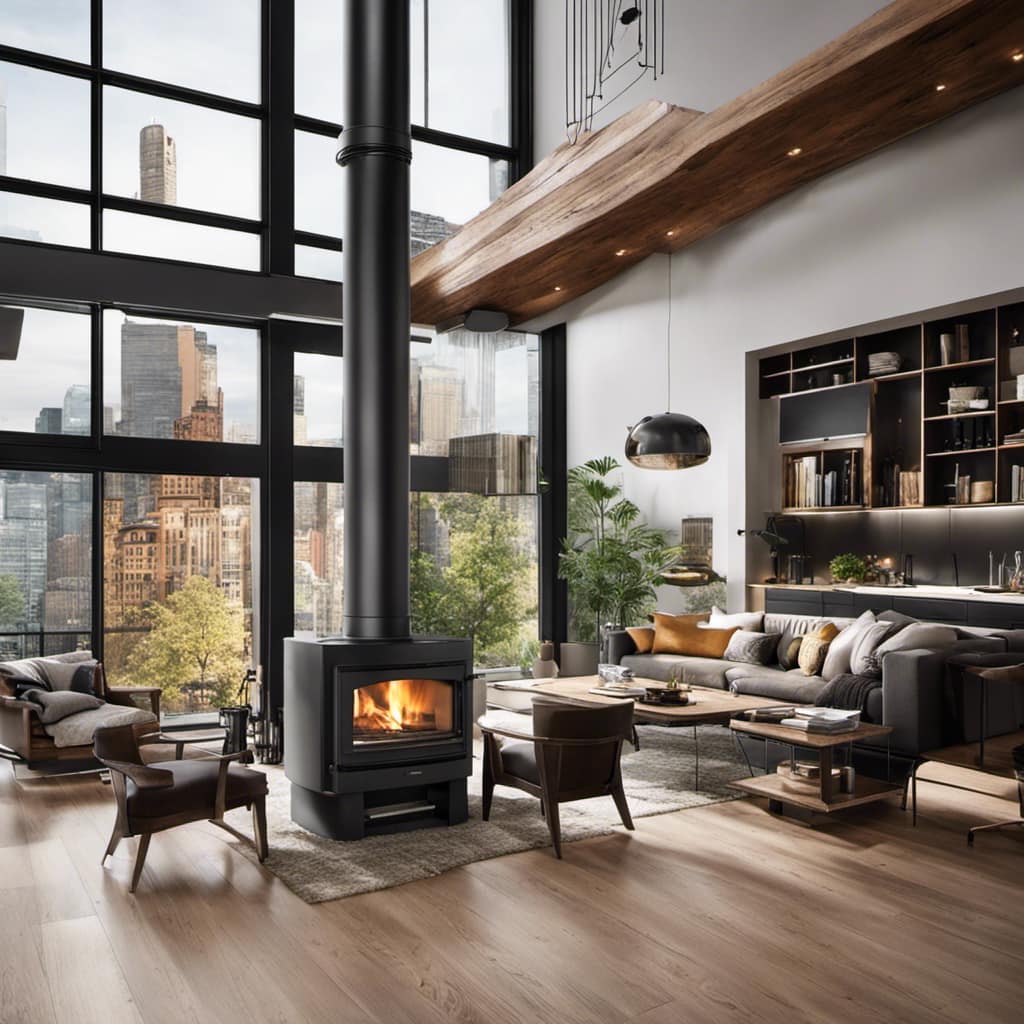
As someone who has a strong love for wood stoves, I am always captivated by the detailed mechanisms that make these heating appliances so inviting.
One crucial component that often goes unnoticed is the damper. Like a conductor guiding the airflow in a symphony, the damper controls the combustion process in a wood stove.
In this article, we’ll explore the purpose, functions, and different types of dampers for wood stoves.
So, sit back, relax, and let’s unravel the secrets of the damper together.
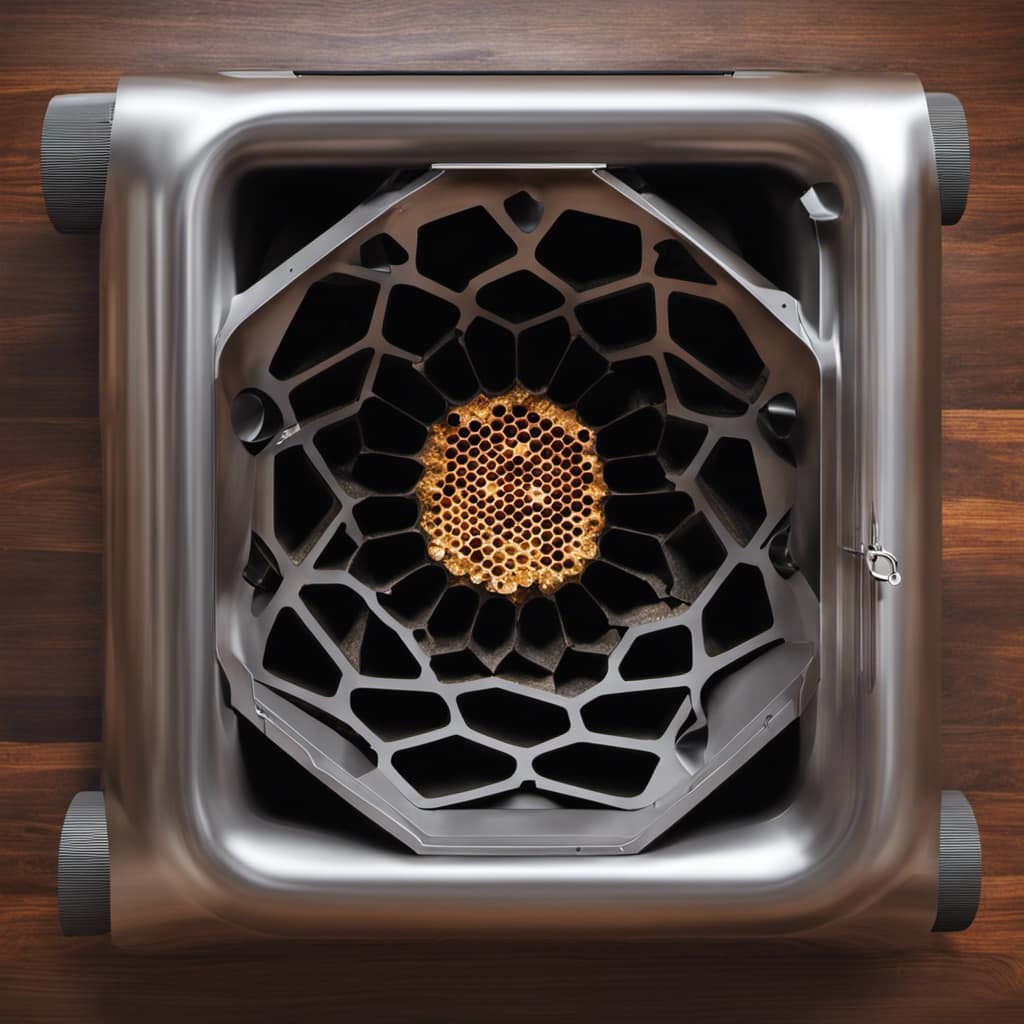
Key Takeaways
- The damper on a wood stove controls airflow and regulates fire intensity.
- Regular maintenance, including cleaning and lubrication, is important for optimal damper performance.
- Different types of dampers, such as bypass, manual, automatic, top, and throat dampers, have specific functions and benefits.
- Proper damper usage can improve burn efficiency, reduce fuel consumption, and prevent heat loss.
The Purpose of the Damper
I believe the purpose of the damper on a wood stove is to control the airflow and regulate the intensity of the fire. By adjusting the damper, you can increase or decrease the amount of oxygen that reaches the fire, which directly affects the combustion process.
This not only allows you to control the heat output of the stove but also helps to improve the overall efficiency of the burn. The benefits of using a damper in wood stoves are numerous. It helps to prevent excessive heat loss through the chimney, reduces the risk of smoke entering the room, and ensures a more even and consistent burn.
However, if you encounter any issues with the damper, troubleshooting common problems such as a stuck damper or improper positioning can help restore its functionality.
How Does the Damper Control Airflow
Controlling airflow is an essential part of regulating the heat in my wood-burning appliance. To achieve this, I adjust the device on my stove, specifically the damper. The damper has a crucial role in controlling the amount of air that enters and exits the stove. By doing so, it allows me to maintain a consistent burn and effectively control the temperature.

Regular maintenance of the damper is of utmost importance to ensure optimal performance. Over time, soot and creosote can build up on the damper mechanism, obstructing its movement and reducing its effectiveness. To prevent these issues and ensure smooth airflow control, it is necessary to clean the damper regularly.
One common problem with damper airflow control is a stuck or jammed damper. When this occurs, it hinders the proper regulation of air and heat. To prevent such issues, it is essential to conduct regular inspections of the damper mechanism and lubricate it as needed. This helps to ensure efficient airflow control and avoids any potential problems in the future.
Different Types of Dampers for Wood Stoves
To control the airflow in my wood-burning appliance, I use different types of dampers available in the market. These dampers play a crucial role in regulating the amount of air entering and exiting the stove, ensuring efficient combustion and heat distribution.
Here are some popular types of dampers I’ve come across:
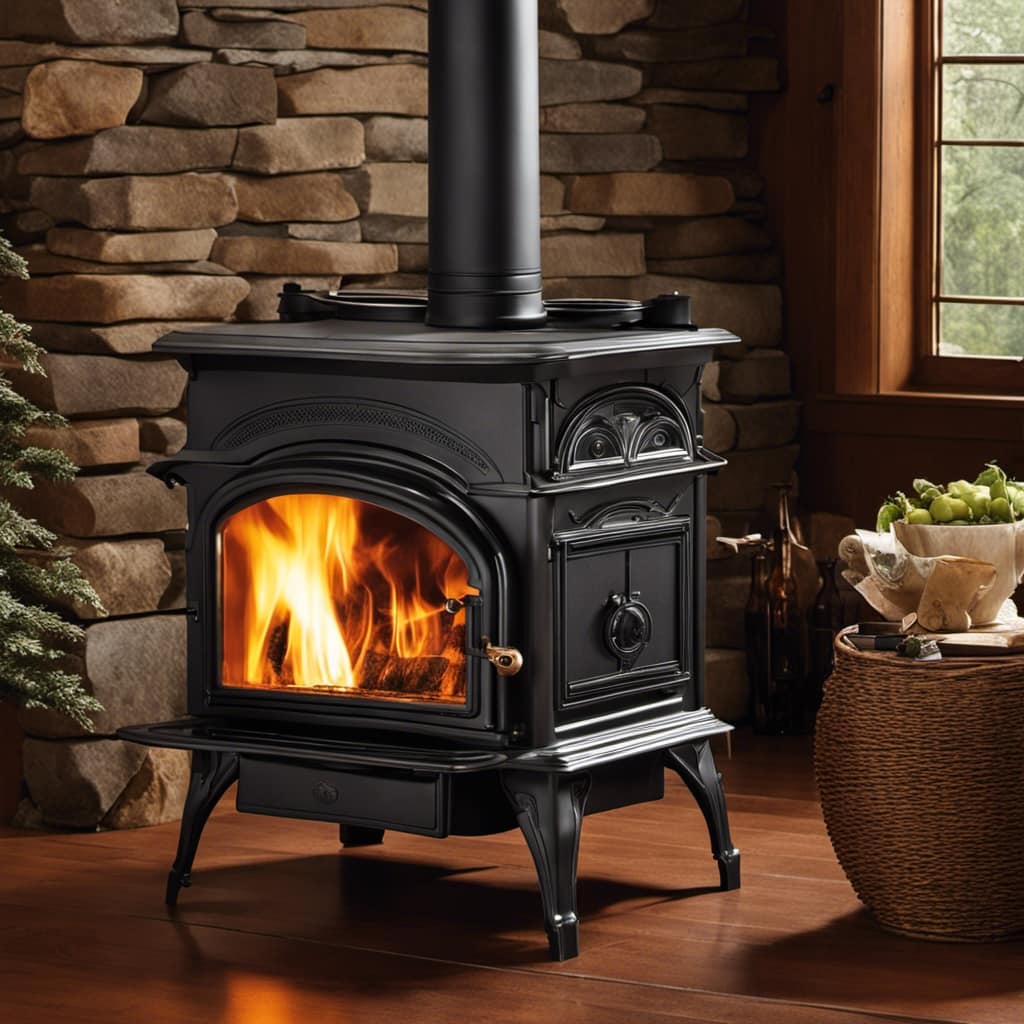
-
Bypass Damper: This damper allows smoke and gases to bypass the firebox, increasing energy efficiency.
-
Manual Damper: Easily adjustable by hand, this damper is convenient for controlling the burn rate and heat output.
-
Automatic Damper: This damper adjusts itself based on temperature, optimizing energy efficiency.
-
Top Damper: Installed on top of the chimney, this damper prevents heat loss when the appliance isn’t in use.
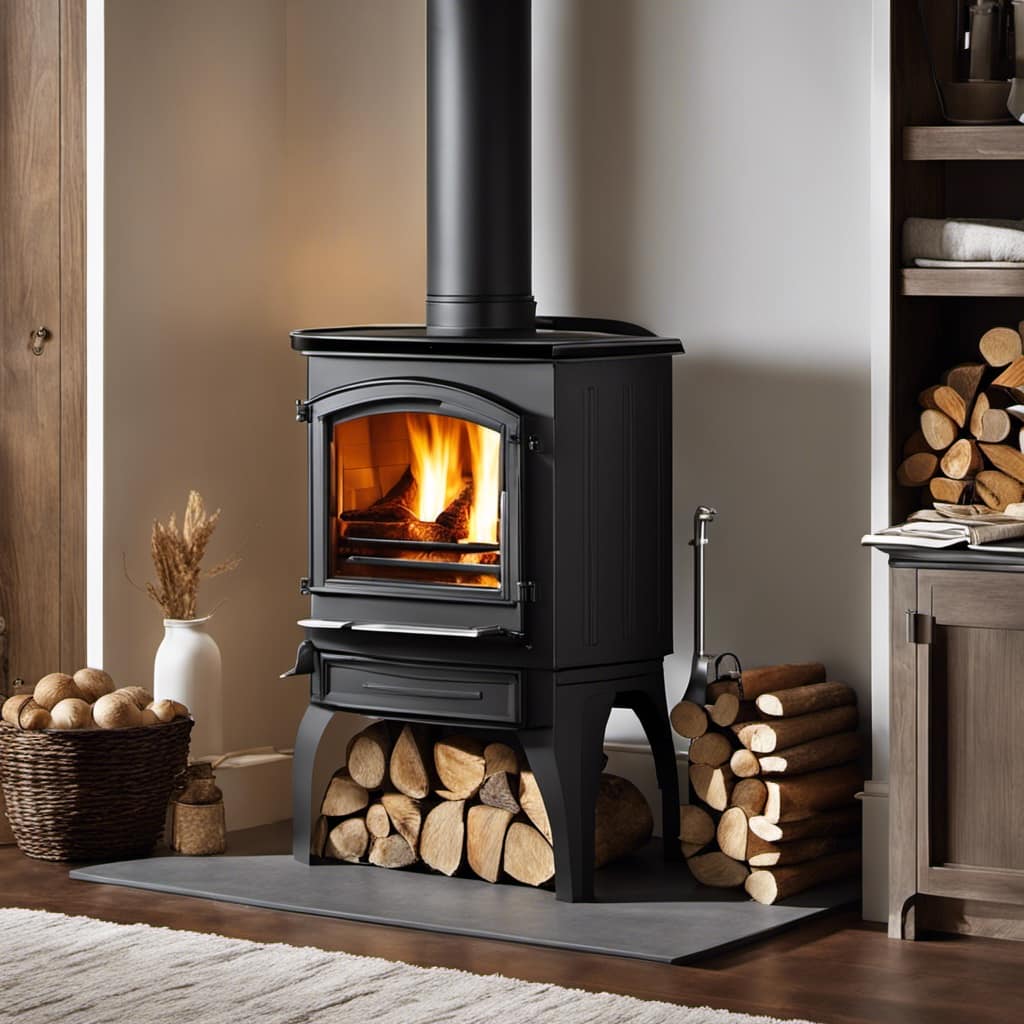
-
Throat Damper: Located above the firebox, this damper controls the airflow during operation.
Proper damper placement is essential for maximum efficiency. By using a damper, you can reduce fuel consumption, minimize heat loss, and ensure a more comfortable and cost-effective heating experience.
Now, let’s move on to some tips for properly using the damper.
Tips for Properly Using the Damper
When using a wood-burning appliance, it’s important to understand how to properly adjust and maintain the airflow for optimal efficiency.

One common mistake when using the damper on a wood stove isn’t opening it enough, which can result in poor combustion and a lack of heat output. On the other hand, opening the damper too much can cause excessive heat loss and wasted fuel.
By finding the right balance, you can benefit from using a damper on a wood stove. The damper allows you to control the amount of air entering the appliance, which in turn controls the rate of combustion and heat output. This means you can adjust the damper to achieve the desired temperature and maintain a consistent burn.
Now, let’s move on to the next section where I’ll discuss maintaining and cleaning the damper for longevity.
Maintaining and Cleaning the Damper for Longevity
I can extend the lifespan of the damper by regularly cleaning and maintaining it. The damper plays a crucial role in controlling the airflow and heat output of a wood stove.

To keep it in top condition, here are some tips:
- Clean the damper at least once a year to remove built-up soot and creosote.
- Inspect the damper for any signs of rust or damage.
- Lubricate the hinges and moving parts with a high-temperature lubricant.
- Ensure the damper opens and closes smoothly without any obstructions.
- Check the gasket seal for any wear or gaps and replace if necessary.
Frequently Asked Questions
How Often Should the Damper Be Opened or Closed?
Opening or closing the damper affects the draft of the wood stove. It can be adjusted for different types of wood. The position of the damper impacts the burn time of the stove.
Can the Damper Be Used to Regulate the Temperature of the Wood Stove?
Sure, the damper on a wood stove can definitely be used to regulate the temperature. It’s one of the many ways to control the heat output and efficiency of different types of wood stoves.
Are There Any Safety Precautions to Consider When Using the Damper?
When using the damper on a wood stove, it is important to take safety precautions. Not properly using the damper can lead to potential dangers like carbon monoxide poisoning or chimney fires.

Can the Damper Affect the Efficiency of the Wood Stove?
Does the damper position affect how much smoke is produced in a wood stove? Can it also impact fuel consumption? Understanding the role of the damper in controlling airflow is key to maximizing efficiency.
Is It Necessary to Have a Damper Installed on a Wood Stove?
It is necessary to have a damper installed on a wood stove. The pros and cons of using a damper on a wood stove vary depending on the type of damper. There are different types of dampers for wood stoves.
Conclusion
In conclusion, the damper on a wood stove is a crucial component that helps control airflow and ensure efficient burning.
By regulating the amount of oxygen that enters the stove, the damper allows for a better combustion process and helps maintain desired temperatures.

Just like a conductor guides an orchestra, the damper orchestrates the perfect balance of air and fuel, creating a cozy and enjoyable experience for all who gather around the warm embrace of a wood stove.
Growing up surrounded by the vast beauty of nature, Sierra was always drawn to the call of the wild. While others sought the comfort of the familiar, she ventured out, embracing the unpredictable and finding stories in the heartbeat of nature.
At the epicenter of every remarkable venture lies a dynamic team—a fusion of diverse talents, visions, and passions. The essence of Best Small Wood Stoves is crafted and refined by such a trio: Sierra, Logan, and Terra. Their collective expertise has transformed the platform into a leading authority on small wood stoves, radiating warmth and knowledge in equal measure.

